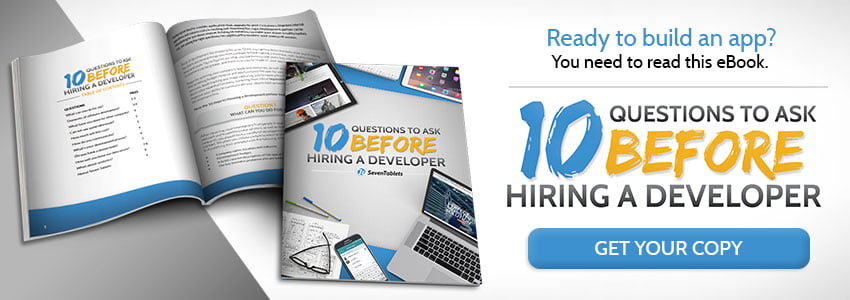The beauty of technology in the 21st century is its ability to reduce much of the planning and manual work necessary to complete professional tasks requiring foresight and on-the-fly adjustments. For instance, augmented reality (AR) is playing an increasingly important role in manufacturing, as it allows architects, engineers, manufacturing plant staff and logistical experts to perform their jobs at a higher capacity.
Augmented reality apps in manufacturing are making quite the splash. Now, workers can digitally overlay images on the real world in order to visualize how alterations or additions would look on a construction site or in the home. This technology allows leaders in the industry to create digital models of their ideas and iron out the design details before physically creating them. By adding AR apps to their manufacturing solutions, contractors, architecture firms and manufacturing plants are able to solve common problems, improve efficiency and gain a competitive edge.
Revolutionizing Design With Thyssenkrupp
The first step of any successful construction process is its design, which requires precision when calculating the dimensions of a space in order to ensure there are no issues later on during assembly. Thyssenkraup is one startup that is changing the manufacturing design game with augmented reality.
The company partnered with Microsoft’s HoloLens technology, an AR platform that Thyssenkraup is using to create stairlifts designed for individuals with mobility issues. Developing and installing stairlifts is challenging because every home has a unique staircase design, so there’s no one solution that fits every home.
To solve this problem, the startup uses AR technology to measure a staircase and create a virtual model of it. The dimensions are calculated via the app, which captures 3D point cloud data and transmits it to the manufacturing team for further analysis. This allows Thyssenkraup to make decisions quickly, as well as making near real-time design approval for stairlift manufacturing plans possible. In addition, salespeople can offer customers a visualization of how the new stairlift will look and function within their home.
Thyssenkraup is an example of how a business can use augmented reality in manufacturing to optimize the design process of a manufacturing project. With this technology, the company is increasing the productivity of its construction squad and bolstering customer satisfaction.
How Boeing is Improving the Assembly Process
World-renowned manufacturer of commercial jetliners Boeing is leveraging an augmented reality app to improve efficiency and simplify the wiring process for every new 787-8 Freighter. Their complex wiring jobs previously required Boeing technicians to use charts and laptops to do the job, which meant they were constantly looking away from the project in front of them to get the assembly instructions. AR now allows the company to receive instructions in real-time without having to multitask.
Technicians get this information through the Google Glass touchpad, voice commands and the head tracking interface. In addition to the voice commands, Google Glass cameras help identify and confirm the wiring inventory. Technicians can also look at how-to videos in order to garner more clarity on the assembly process without averting their eyes.
Boeing says the AR solution has helped them complete the wiring process in about 25% less time while also reducing the error rates to virtually zero. The value of AR here is its ability to make manufacturing work processes more efficient, comprehensive and easier to follow.
DHL is Improving Inventory Management With AR
Shipping and logistics firm DHL requires speed and accuracy in order to offer its inventory management solutions. In 2015, the company rolled out an augmented reality manufacturing app with Google Glass and other AR head-mounted displays to improve the efficiency of its warehouses.
The technology offers its workers navigation during the inventory management process, sending them to the correct aisle and shelf for the packages they’ve been assigned. These packages are specially highlighted in the displays, helping warehouse personnel easily and quickly identify the package across a large number of similar boxes.
The pilot study for this app saw 10 order pickers fulfilling 9,000 orders that consisted of 20,000 items. This program was a success that helped workers perform faster, more efficiently and with a much smaller error rate. Inventory management and logistics can be a headache, but DHL successfully implemented AR to make its workers’ jobs easier while increasing customer satisfaction rates.
Bettering Quality Assurance With Porsche
Quality control is imperative in the automotive industry, and Porsche has a high-quality reputation to maintain. As such, the company has sought new technologies to ensure every one of its vehicles is free of manufacturing defects. To this end, Porsche upgraded its factories at Leipzig and Zuffenhausen with an initiative called Porsche Production 4.0. The initiative involved creating robots to perform repetitive tasks and an AR application that raises the bar of its quality control protocols.
The automaker uses AR to quickly obtain precise design information about its components. Work steps and details about a vehicle’s production are displayed on a tablet with added digital images, which can identify minor deviations in order to determine if there are any problems with body part fits. Porsche Production 4.0 uses computer-generated images and optical measuring to measure up to 16 million points per scan, allowing the dimensions of a vehicle to be plotted in a high-definition point cloud. The end result is the ability to identify any deviations as quickly as possible.
With AR, the company can measure everything from dimensional accuracy to surface finish and the functional efficacy of power windows, lights and other components. Porsche’s app is an example of how businesses are using AR to improve the quality of their products and services with the goal of reducing design errors.
The Power of AR Apps in Manufacturing
Virtually every step of the manufacturing process can be improved with an augmented reality app, including the design, assembly, supply chain and quality assurance of a product or service. The technology improves customer satisfaction rates while also making workflow more efficient and cheaper, allowing businesses to operate more smoothly and earn higher profits.
Implementing augmented reality in a manufacturing strategy is a valuable step, but you will need a talented developer to bring your app to fruition. The team at 7T is well-equipped to develop an AR app that will optimize your design, assembly and supply chain processes. In addition, we have extensive experience with other emerging technologies, including virtual reality, blockchain, artificial intelligence and natural language processing.
Although we are based in Dallas, 7T also works with clients in Austin, Houston, and across the United States. To get started on your project, contact us today.










